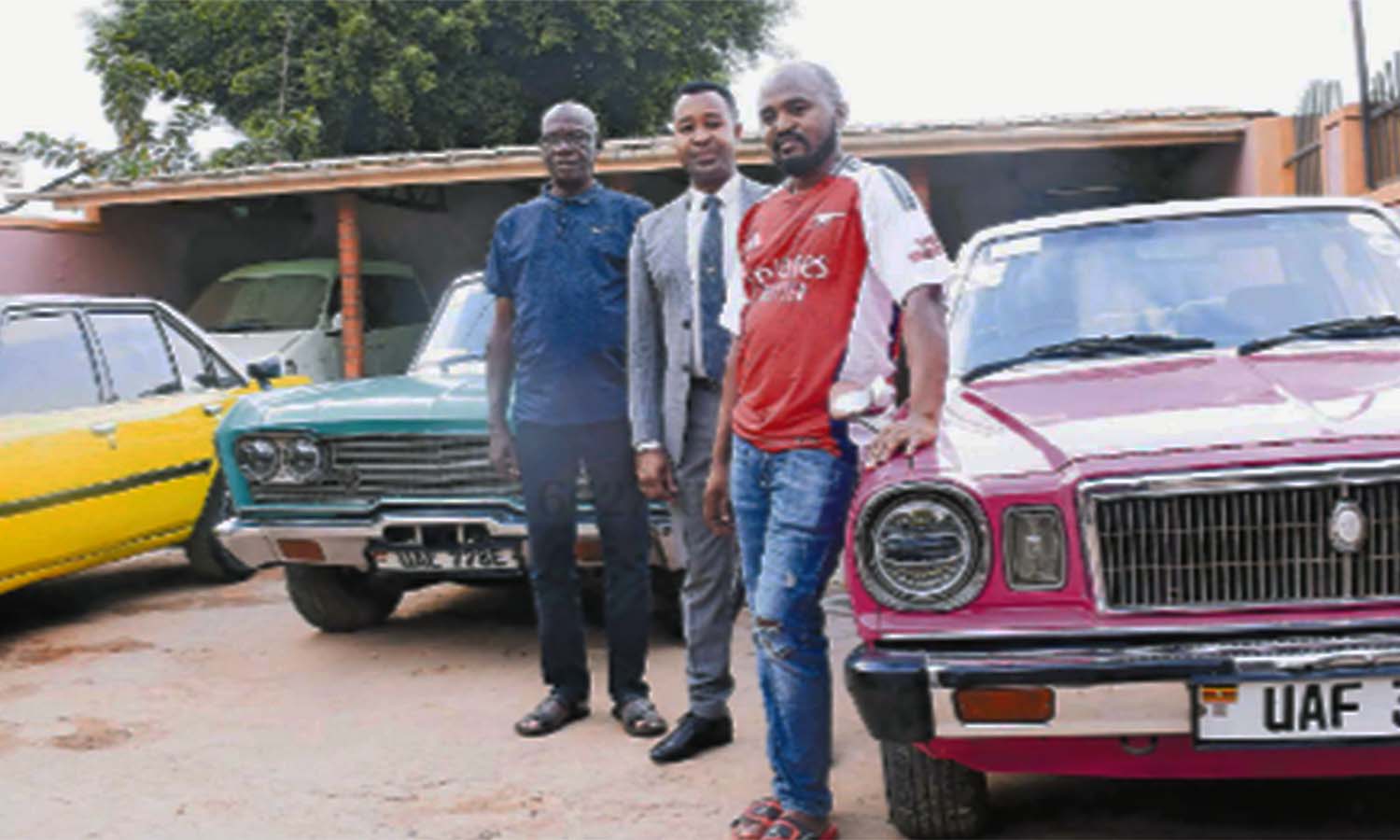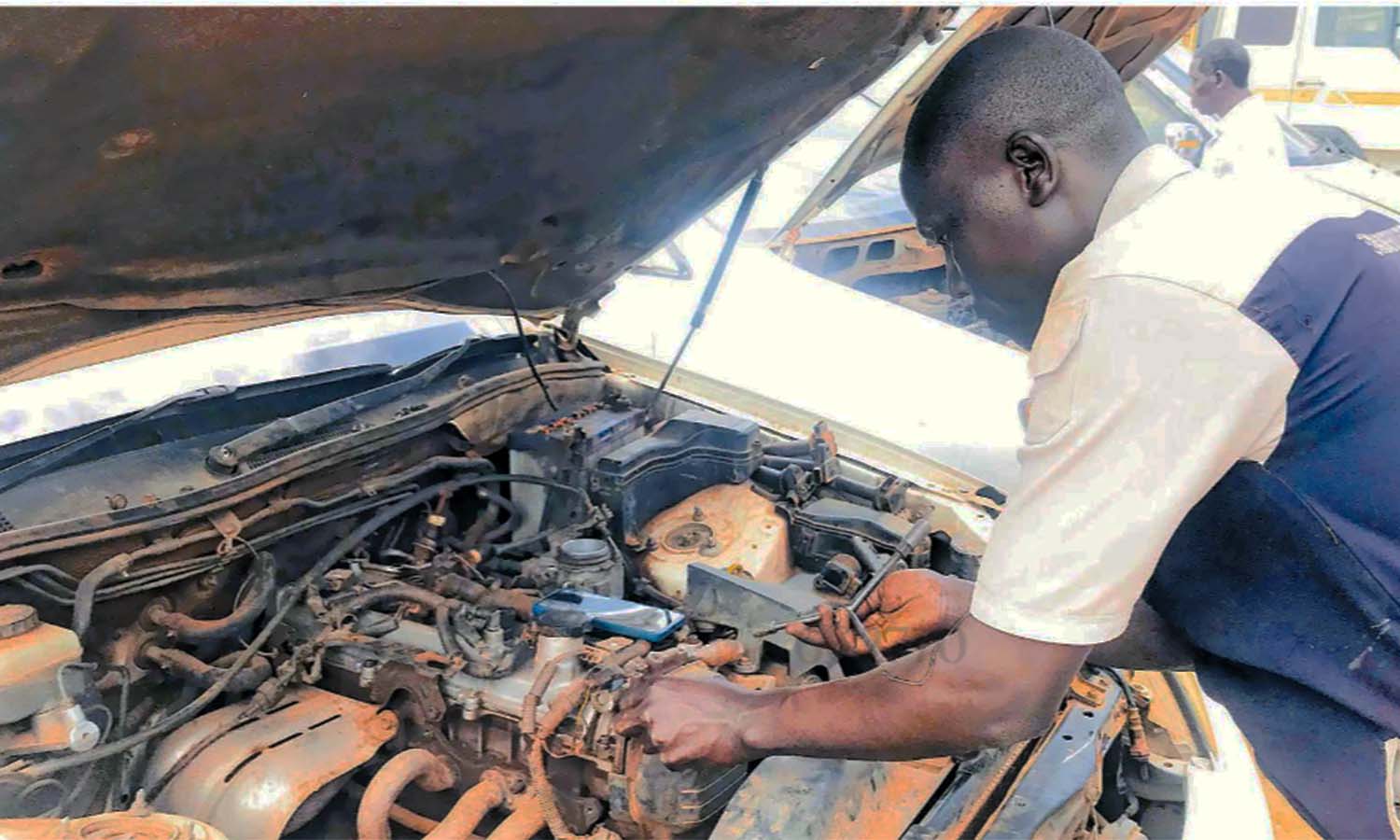Prime
Lugoloobi’s Shs44.7 trillion budget fails NDP III test

Amos Lugoloobi, Ntenjeru County MP, holds the brief-case containing the Budget statement Financial Year 2021/2022 during the National Budget Speech Day on Thursday. PHOTO/ file
What you need to know:
NDP III is the third in a series of six NDPs planned to guide the nation in delivering Uganda Vision 2040.
On April 19, Amos Lugoloobi threw out Matia Kasaija and ordered him to withdraw the proposed Shs41.2 trillion Budget on grounds that it was not aligned with the country’s National Development Plan III goals.
Mr Kasaija, the new Finance minister designate, was told to go back to the ministry and increase the proposed 2021/22 Financial Year budget by Shs8.5 trillion.
Kasaija convened a crisis meeting and asked the technocrats to review the budget allocations with a view of increasing the resource envelope but only managed to raise additional Shs3.5 trillion.
The implementation of NDP III, a key policy document that gives strategic direction to the country’s development agenda required a budget of Shs49.7 trillion in the second year of implementation .
Mr Lugoloobi, who chaired the Budget Committee in 10th Parliament, however, didn’t know that in less than two months, he would be at Kololo Ceremonial Ground, reading a budget that falls short of the aspirations in the NDPIII. Mr Museveni left out Kasaija and picked Mr Lugoloobi to read the budget on his behalf. Mr Lugoloobi is now the new planning minister-designate.
Mr Lugoloobi’s total resource envelope is Shs44.7 trillion down from Shs49.7 trillion in second year of NDP III implementation. There is a shortfall of Shs5 trillion.
The budget maintains the 19 government priority programmes but ignores targets on resource allocations.
In the 2021 budget, Mr Lugoloobi laid out policy actions and development programmes to execute the NDP III in the 2021/2022 Budget to realise human capital development, and inclusive economic growth, among other priorities.
NDP III is the third in a series of six NDPs planned to guide the nation in delivering Uganda Vision 2040. For instance, Mr Lugoloobi has in the new budget allocated more money to Human Capital Development (Shs7.7 trillion) in contravention of the NDP III targets, ceiling the programme expenditure at Shs5.9 trillion.
The other three programmes that received more than what had been budgeted for under NDP III are Regional Development (Shs3.8 trillion as opposed to Shs1.2trillion) Integrated Transport Infrastructure and Services (Shs5.1 trillion instead of Shs3.8 trillion) and Agro-industrialisation received Shs1.6 trillion as opposed to Shs1.7 trillion under NDPIII.
NDP III, which runs from 2021 to 2024/2025 is anchored on progress made, challenges encountered and lessons learnt from the previous planning and implementation of NDP1 and NDP II.
For successful implementation of NDP III, the following key development strategies will be pursued, namely agro-industrialisation; fast-track oil, gas and mineral-based industrialisation.
Reduced poverty rates; from 21.4 per cent to 18.5 per cent; reduced income inequality (Gini coefficient); from 0.41 to 0.37; increased contribution of industry to GDP; from 18.6 per cent to 28.6 per cent; increased rate of growth of the industrial sector from 6.1 per cent to 8.1 per cent. Increased rate of growth of the agricultural sector from 3.8 per cent to 7 percent; reduced youth unemployment due to annual increase in jobs created at 512,000 annually; from 13.3 per cent to 9.7 per cent; increased value of manufactured exports in total exports; from 12.3 percent to 19.8 per cent.
Reduction in the percentage of households dependent on subsistence agriculture as a main source of livelihood from 68.9 per cent to 55 per cent; increased electricity consumption per capita from 100kwh to 578kwh; increased forest cover from 9.5 per cent to 15 per cent.
While presenting Uganda’s 2021/2022 Budget yesterday, the designated State minister for Planning said the key to rapid socio-economic transformation in Uganda, rests on industrialisation that is mainly based on agriculture, boosting private sector business, and ensuring the wellbeing of Ugandans and the development of their skills for productive work.
He said the 2021/2022 Budget is premised on the theme, industrialisation for inclusive growth.
Mr Logoloobi said transforming education is paramount in improving learning outcomes, especially with the recent experience during the Covid-19 pandemic.
He said adopting e-learning methods and digitising inspection and supervision to address absenteeism of learners will improve learning outcomes.
“We shall also build on the gains of the universalisation of education and skilling programmes by upgrading more of the country’s education training facilities into effective institutions of learning and skills development,” he said.
Mr Logoloobi said priority will be placed on improving staffing and teacher quality at all levels; enhancing inspection and supervision of schools, rehabilitate primary and traditional secondary schools and complete construction of selected vocational institutions.
He also announced that 4,200 primary school teachers will be recruited to raise the national staffing level to 70 per cent. In addition, 1,055 secondary teachers will be recruited in local governments with staffing level below 50 per cent of the establishment. To improve supervision, 440 inspectors will be recruited across all local governments.
Mr Logoloobi said teacher and school management absenteeism, the Integrated Inspection System (electronic inspection) will be rolled out throughout the country.
He said 74 primary and 13 traditional secondary schools will be rehabilitated, including Nabisunsa Girls School.
Mr Logoloobi also announced the partially completion of 36 schools, including Morungatunyi Secondary School.
He said seven skills development institutions such as Arua School of Nursing will be completed.
In the new budget, Mr Logoloobi said improving the quality of life of Ugandans is central to Uganda’s government growth strategy.
“A healthy population and skilled workforce is a fundamental requirement for socio-economic transformation. Key interventions in education, health, water and sanitation are necessary to ensure effective human capital development,” he said.
Mr Logoloobi added: “Health infrastructure will be maintained and systems strengthened to ensure increased efficiency and effectiveness in healthcare delivery. The use of digital technology will play a key part in not only delivering health skills training, but also in improving systems for greater efficiency.”
He said other priorities of the health sector next year include the upgrading 43 health facilities and constructing new Health Centre IIIs in 60 sub-counties.
He said recruitment of additional staff for each of the upgraded health facility has been planned.
He said construction and equipping of the Uganda Heart Institute at Mulago will be completed and the Regional Oncology and Diagnostic Centre in Gulu by the Uganda Cancer Institute will be established.
He said government will ensure adequate supply and delivery of essential medicines and health supplies.
“The National Medical Stores budget has been increased from Shs420.3 billion this fiscal year to Shs.600.3 billion next financial year,” he said.
Mr Logoloobi also said the agro-industrialisation strategy will address low production and productivity of primary agriculture, poor post-harvest handling and storage, limited value addition and insufficient market access. It will also permit adherence to food safety requirements and standards in export markets.
Government hopes that this will also partially address the reason provided to create Non-Tariff Barriers (NTBs) in regional markets, which constrains agribusiness.
Mr Logoloobi said specific focus in the coming budget has been placed on implementing the parish development model which provides a unique opportunity for transforming the subsistence households through productivity enhancement, jobs, and the empowerment of youth and women.
Investments in oil and gas will provide opportunities for both direct and indirect jobs, including local enterprises development. This approach seeks to create income generating opportunities at the 10,594 parishes in the country.
Mr Logoloobi said ICT is key to enhancing socio-economic transformation and for improving efficiency and productivity.
“The Covid-19 pandemic has presented the opportunity for digital transformation of the economy. Therefore, the major priorities for Financial Year 2021/2022 will include the extension of broadband ICT infrastructure up to the sub-county level; expanding the digital terrestrial television and radio broadcasting network to facilitate tele-education for learners; and facilitating the development of software solutions to support eGovernment, eCommerce and ePayment, among others,” he said.
He announced that Shs134.9 billion has been allocated in the new Budget for to enhance digitisation of the economy.
Overall, Mr Logoloobi summed up his budget speech by saying the Economic Growth Strategy for the medium term aims to achieve faster and inclusive growth and enhanced socio-economic development.
The target is to raise growth rates from 4.3 per cent estimated for Financial Year 2021/2022 to at least seven per cent in the medium-term.
The strategy that will achieve these medium-term objectives is three-fold, namely restoring the economy back to the medium-term growth path; improving the wellbeing of the population to ensure a healthy and skilled workforce; and providing peace, security and good governance.
NEW 2021/2022 BUDGET vs NDP
PROGRAMme | NEW 2021/2022 BUDGET (shs) | ndp budget vs mof (shs) |
Governance and Security | 6.9 trillion | 6,951 |
Intergrated Transport Infrastructure and Service | 5.1 trillion | 3,827 |
Agro-Industrialisation | 1.6 trillion | 1,721 |
Regional Development | 1.2 trillion | 3,889 |
Development Plan Implementation | 1.1 trillion | 1,883 |
Sustainable Energy Development | 1.1 trillion | 943 |
legislature | 831 billion | |
Climate Change, Natural Resource and Environment and Water | 668billion | 1,899 |
Private Sector Development | 587 billion | 544 |
Judiciary | 376 billion | |
Innovation, Technology Development and Transfer | 358 billion | 594 |
Public Sector Transformation | 325.8 billion | 3,476 |
Sustainable Urbanisation and Housing | 312 billion | 825 |
Tourism Development | 178 billion | 613 |
Digital Transformation | 134 billion | 645 |
Sustainable Development of Petroleum Resources | 106 billion | 683 |
Community Mobilisation and Mindset Change | 56 billion | 722 |
Manufacturing | 54 billion | 481 |
Mineral Development | 49 billion | 515 |
Non-discretionary allocations | ||
Domestic Refinancing | 8,547 | |
Interest and Amoritisation | 5,031 | |
External Debt Repayment | 1,786 | |
Domestic Arrears | 400 | |
Local Revenue for local government | 212 | |
interests payments due | 13,651 | |
Total | 44,778 | 49,763 |




